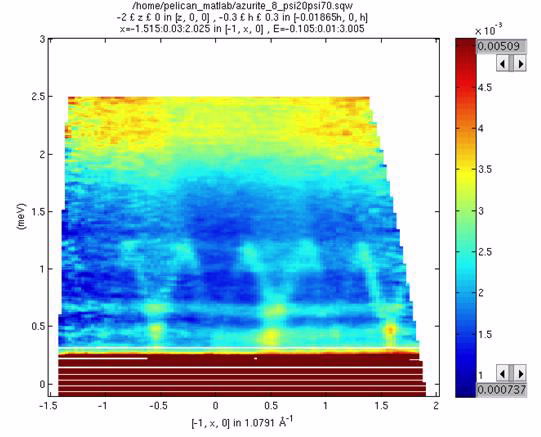Over the last week, as part of the commissioning activities on our PELICAN cold-neutron time-of-flight spectrometer, we have successfully taken and processed our first inelastic neutron scattering data set from a single crystal, in this case the natural mineral azurite, which is a low-dimensional quantum antiferromagnet.

The experiments, showing magnetic excitations up to an energy transfer of 3 meV, were performed at a temperature of 1.4K and in applied magnetic fields up to 3T.
Azurite is an intriguing quantum magnet. Its magnetism arises from chains of spin ½ Cu-ions which interact almost exclusively in one dimension, allowing us to call it a quasi-1D magnetic material. These materials exhibit scattering which can be modelled by a 1D Heisenberg antiferromagnetic (1DHAFC) model with spinon continuum.
Azurite is interesting in that it deviates from the true 1DHAFC by showing two gaps in the spectrum at low energies, as a result of the long-range antiferromagnetic order below 1.8K.
With these measurements we were able to scan across 3 Brillouin zones and clearly reveal the dispersion of the 1DHAFC with the two gaps indicating that PELICAN has a very good energy resolution for these types of measurements which were taken with an incident neutron wavelength of 4.75Å.
Congratulations to instrument scientists Richard Mole and Dehong Yu, fellow investigators Kirrily Rule and Don Kearley, and our sample-environment team, for achieving this important milestone.
Published: 29/08/2014


